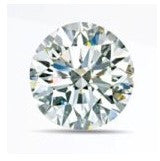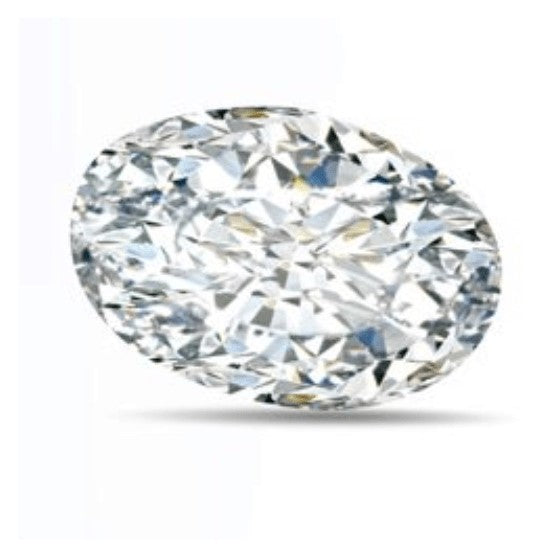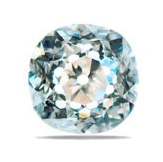Rings: Types, Settings, Symbols, Choosing & Stacking Tips

Which ring is better for your hand & finger shape?
Rings enhance your beauty while adding to your personality. Therefore, the ability to choose the right ring according to the shape of the hand and fingers is important.
If you have long fingers, use round and square shapes, wider bands, and bold styles, try to avoid rings with elongated shapes such as oval or drop shapes. Princess, cushion, and round-cut diamonds set onto a thicker band are particularly flattering on longer fingers.
If you have shorter fingers then choose large rings with a stone or a pattern of an elongated shape (oval, pear, marquise). Do not pick asymmetrical, rectangular or triangular rings as they make your fingers appear smaller, avoid wide rings that completely cover the area between the joints, and choose slender, narrow-width bands to create the illusion of length.
If you have wide fingers, narrow stones will make your fingers look even wider, go for wide oval, marquise, rectangular or emerald shapes, angular or asymmetrical designs, cluster styles, and larger settings with medium to thick bands.
If you have narrow/slender fingers, use wide rings with smaller stones or rings with thick band rings and no pebbles. The wide ring visually increases the width of the finger. If your fingers are short but slender you could look for a narrow marquise- or pear-cut diamond to elongate as well as widen the finger.
If your hands are rather plump or big, irregular shapes such as zigzags and elongated shapes will create a thinner appearance while rings with a round stone emphasize the plumpness. Try large, chunky styles, cocktail rings, and larger stones in a bezel setting, avoid thin bands.
If your hands are small, choose small round, princess-cut, oval, or heart-shaped stones with small sizes. Keep the stone in proportion to your hands.
If your hands have visible joints, try thicker/heavier bands with large stones to divert the attention of your knuckles, avoid too thin and small rings as they get lost on your fingers and emphasize them more.
Types of Rings





Band
Simple ring uniform in width without a top

Statement
Has an over-sized stone in the center, may be surrounded by other stones or motifs

Triple / Puzzle
Ring formed by three band rings that intersect with each other

Claddagh
A traditional Irish / Celtic ring design featuring two hands holding a crowned heart. The hands represent friendship, the heart represents love, and the crown represents loyalty

Antique
A collectible ring that is valuable because of its age and quality

Birthstone
A slender ring featuring precious or semi-precious gemstones that are associated with the specific month of a person’s birth

Cluster
Multiple diamonds or gemstones of various sizes fashioned together in one setting, or a ring containing a central, main gemstone with numerous smaller stones accenting it

Cocktail
Large, dramatic ring that rises considerably off the finger, set with many large, colored imitation gems and smaller faux diamonds

Beaded
They are made by weaving beads onto threads or wires, the designs are various from simple to elaborate

Nugget
A raw chunk of precious metal, usually yellow gold, constitutes a rough, rocky texture on the surface of a gold band

Spinner
A ring with two or more bands, one comprises the base and the others act as a spinning insert. It may be decorated with an intricate pattern or feature engravings

Stack
Two or more bands are meant to be worn together on the same finger. They can be identical or set with different stones, and their size may vary as well

Graphic
Personalized, thin, delicate, text-heavy rings

Signet/Seal
An emblematic ring, often bearing a family coat of arms, some of which are fit for use to imprint a wax seal

Thumb
Traditionally it was worn by archers to protect their thumb during rapid firing, also worn as a sign of power

Crossover
Combination of different band rings with same size but different materials crossing each other

Wrap
Metal ring that spirals up your finger

Disconnected
Rings have two open ends at the front

Bypass
A ring that coils around the finger with the ends of the band passing each other on top

Glass
Rings made of rainbow colors and variety of designs by glass craftsmanship

Chain
Very thin/small that you can barely tell, it’s made up of a chain

Mood
A novelty ring which changes colour in response to body temperature, using a thermo chromic liquid crystal

Solitaire
Large or small single stone, usually a diamond, set in a mount of yellow/white gold or platinum

Charm
Ring with charm applied on top

College/Class/Graduation
Worn by college or university students to commemorate their graduation

Dome
Made from a spoon, was used as wedding ring by servants who could not afford the jewelry

Types of Settings

Prong
Use of four or six metal projections or tines, called prongs, to secure a gemstone to a piece of jewelry. A common setting for diamond engagement rings, that allows light to strike a gemstone from more angles, increasing its brilliance.

Bezel
Surround the stone with a band of metal, fully or partially. Settings, where only part of the stone’s outer edge is held by a metal band, are referred to as partial bezel settings.

Channel
As the name suggests, hold stones in a channel made in the ring’s band. They are popular for wedding bands and stackable rings that feature smaller stones without a center stone.

Invisible
Hold the stone in a metal framework that is underneath the stone and is not visible from the top of the ring. It’s a difficult setting type which creates the illusion of larger diamonds.

Station/Flush
Gemstones into a drilled hole in the band of the ring at specific points as in stations.

Tension
A ring in which the gemstone is held in place by pressure, suspended between the two sides of the shank. They reflect more light, offering more brilliance and sparkle.

Pave
A setting that consists of a lot of small gemstones attached to the jewelry by droplets of metal. The surface looks like it has been paved with diamonds or other stones.

Cathedral
Gemstone or diamond is held by metal arching prongs that go up to its girdle, this adds extra height and makes the center stone appear larger. These prongs often resemble the graceful arches of the traditional European cathedrals.

Baguette
Channel-set rings where the stones inside are all set in a row, with no brackets in between.

Halo
A ring featuring a central diamond or gemstone framed by many smaller diamonds or gemstones. If the center and accent stones are two different colours, it draws more focus towards the center stone and makes it look larger.

Round

Pear

Oval

Cushion

Marquise

Princess

Emerald

Asscher

Heart

Radiant

Wedding Band
The complete circle of the band symbolizes everlasting love, made of white/yellow gold or platinum. Usually worn on the fourth finger on your left hand.

Promise
A sign of commitment between two people is also called a pre-engagement ring. They are often viewed as more of a fashion piece while engagement rings have more classic styles.

Anniversary Band
A ring where diamonds or gemstones are set 1/3 or 1/2 of the way around the perimeter of the band. The stones are usually set in a channel or a prong setting.

Eternity/Infinity
A symbol of eternal love uniform in width and set with continuous rows of identically cut gemstones or diamonds. Usually given by a spouse to their wife when a significant anniversary.

Engagement
A ring is traditionally given to a woman by her fiancée as a symbol of his commitment to marry, usually a set of diamonds and/or gemstones. Generally worn on the fourth finger of your left hand during the engagement. After getting married, you should place it on top of your wedding band.

Triology
A cluster of three stones is set along the hoop where the center stone is often larger or set higher than the two other stones which are identical. The three stones symbolize the past, present (center stone) and future.
How can you stack your rings?



It's a simple trend that can elevate your outfit and is also fun and a great way to express your individuality, style, and personality. There are a few ways to accomplish this look without going overboard:
* Start with stacking thin, delicate rings to keep the stack from being too busy
* Use the colors of the metal that flatters your skin tone
*Pair signature rings with simple bands to balance out the look so as not to distract from the focal point
*Start stacking on one finger (for example index finger), it is a great way to keep your look simple
*Keep the stones all in one color or similar tones but with different cuts to make your look cohesive
*Keeping your metals all in the same color family can unify and pull together your look, avoid mixing brushed and shinier metals
*Matching rings of varying textures and widths can create a dynamic look
*Use one large statement ring and add other rings in complementary colors and motifs
*Wear larger gaudy rings on the index finger or thumb and thinner bands on to your middle finger like wishbone rings
*Wearing the same or similar rings in different metals creates an elegant look, put together your mixture of silver, gold and rose gold, if you’re working across several fingers, either keep the stacks in the same order each time or flip the order
*Match the graphics, but not in a matchy-matchy kind of way, go for a range of sizes and shapes
*Silver rings in all different shapes make for a boho-inspired look, combine delicate styles with chunkier pieces
*You may match your nail polish to your stackable rings



